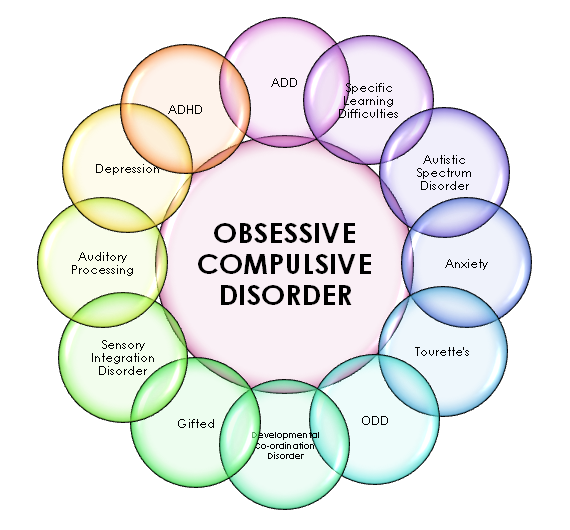Obsessive Compulsive Disorder

Many neurodevelopmental conditions can often exist together, but each can be treated in different ways. The picture below illustrates how the conditions overlap. Please use the drop down menu to view other conditions.
What Is OCD ?
What Are The Symptoms Of OCD ?
For example someone may constantly worry that they have been contaminated by dirt or germs (obsessive thought) and then repeatedly wash their hands or shower/wash (compulsive behaviour) to try to ‘put right’ the distress and relieve the anxiety.
Most people with OCD have both obsessions and compulsions but some only experience obsessive thoughts and others have compulsions without knowing why.
How Common Is OCD ?
Minor compulsions and obsessions are common, for example many people go back to check they have locked the door or carry out minor rituals such as not stepping on cracks in the pavement but these do not interfere with daily life.
In OCD these compulsions and obsessions are so severe that they interfere with normal everyday life and are unpleasant and often frightening. It is estimated that up to 3% of adults and up to 5% of children and teenagers have OCD.
OCD usually starts in early adult life before the age of 25, but may begin at any time, including childhood. Up to 30% of individuals with OCD may also have ADHD.
What Causes OCD ?
How Is OCD Managed ?
Individuals with ADHD and OCD need to be monitored carefully as stimulant medication for ADHD may not be suitable for someone with OCD.
Outlook
With treatment, the outlook for OCD is good. Some people achieve a full cure, for others the severity of symptoms is reduced sufficiently to improve quality of life. Left untreated the symptoms of OCD may not improve and in some cases will get worse. Without treatment, nearly half of people with OCD still have symptoms 30 years later.



